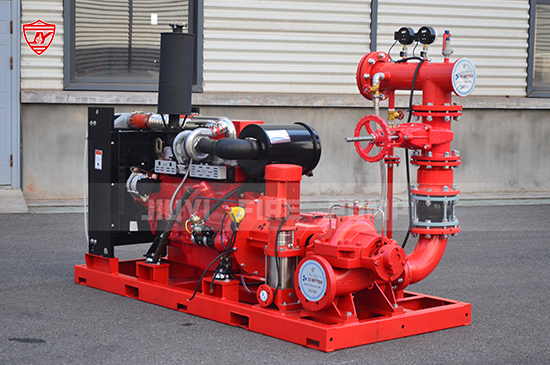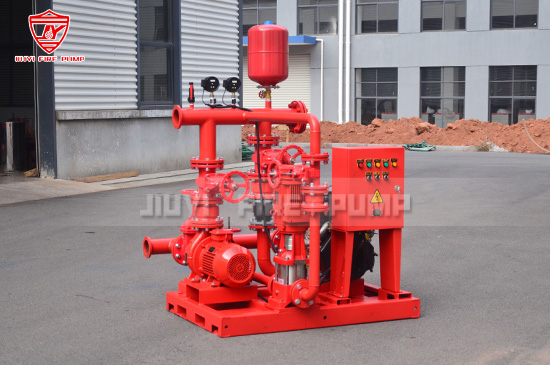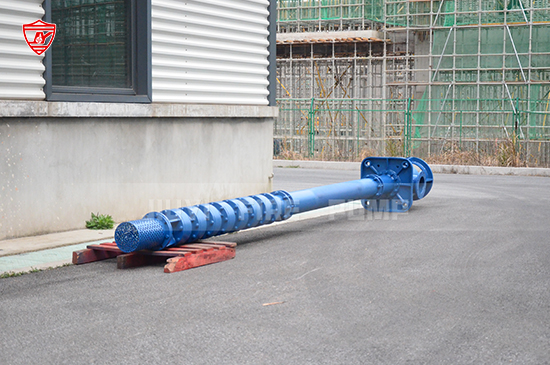In the world of fire safety, system reliability is everything. Fire pump systems are the heart of many building protection infrastructures, and their readiness can mean the difference between minor damage and catastrophic loss. Yet, despite the attention paid to high-tech components, diesel engines, and control panels, one critical area is often overlooked: the fire pump baseplate.
Corrosion at the baseplate level can compromise the entire system over time. Starting corrosion protection at the foundation—literally—ensures long-term integrity and performance of the fire pump system. This article will explore why corrosion prevention at the baseplate is crucial, how corrosion occurs, and how manufacturers, installers, and maintenance teams can address it effectively.
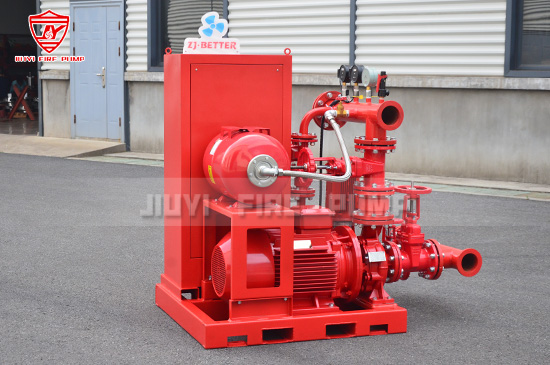
Understanding the Role of the Baseplate in Fire Pump Systems
The baseplate is more than just a structural element; it forms the foundation of the entire fire pump unit. It supports the pump and driver, maintains alignment, and transfers loads to the concrete pad. Because of its foundational role, any weakness at the baseplate can jeopardize the system's mechanical integrity and alignment, potentially leading to vibration issues, misalignment, or premature wear.
The baseplate is also the first component to come in contact with moisture and environmental elements—especially in basements, pump rooms, and water-prone areas. If corrosion starts here, it doesn't stay here. It can spread upward, destabilize anchoring bolts, and ultimately affect pump alignment and performance.
How Corrosion Begins at the Baseplate
Fire pump baseplates are typically constructed from carbon steel, which, while durable, is highly susceptible to rust when exposed to moisture, humidity, or chemical agents. Some key contributing factors to corrosion include:
-
Water exposure: Whether from condensation, pipe leaks, or sprinkler discharges, water pooling around or under the baseplate is a common issue.
-
Chemical exposure: Cleaning agents, fuels, or chemicals in nearby storage can accelerate corrosion.
-
Poor ventilation: Inadequate air flow in pump rooms can trap humidity.
-
Incorrect installation: If grout is improperly applied or not sealed, moisture can seep underneath the baseplate.
Over time, these conditions create the perfect environment for rust to form and spread. And once corrosion begins, it’s difficult to contain without major intervention.
Why Corrosion Protection Should Begin at Installation
Corrosion prevention should not be a reactive process. Instead, it must begin at the design and installation phase of your fire pump system. Here’s why:
1. Foundation-Level Failure is Expensive and Disruptive
Fixing a corroded baseplate often involves partial or full system disassembly, leading to costly downtime and potential code compliance issues. In severe cases, complete pump replacement might be required—an expense that could have been prevented with upfront protection.
2. Early Protection Increases Longevity
Treating the baseplate with protective coatings or using corrosion-resistant materials can extend the life of the system significantly. It prevents small issues from turning into large-scale replacements or overhauls.
3. Maintains NFPA and Insurance Compliance
Corroded parts can fail inspection or violate National Fire Protection Association (NFPA 20) guidelines, especially if pump alignment is affected. Insurance providers may also penalize facilities with poor maintenance histories.
4. Ensures Alignment and Performance
Misalignment due to corrosion beneath the baseplate can result in vibration, noise, bearing failure, or even cavitation. These performance issues are difficult to diagnose if the root cause—foundation corrosion—is overlooked.
Best Practices for Preventing Corrosion at the Baseplate
Proactive corrosion protection begins with a few key strategies. Whether you’re a manufacturer, installer, or building manager, applying these best practices can help ensure long-term reliability:
1. Use Coated or Stainless Steel Baseplates
While carbon steel is common, using coated steel or stainless steel can drastically reduce the risk of corrosion. Powder coatings, epoxy paints, or hot-dip galvanization provide barriers against moisture and chemicals.
2. Apply Anti-Corrosion Paints and Sealants
A high-quality corrosion-inhibiting primer followed by a two-part epoxy or polyurethane topcoat is often sufficient for indoor environments. For outdoor or harsh environments, additional protection may be needed.
3. Proper Grouting and Sealing
Ensure that non-shrink grout is applied beneath the baseplate to eliminate voids where water could collect. After grouting, apply a waterproof sealant along the grout-baseplate joint to prevent seepage.
4. Elevate or Isolate the Baseplate
In some installations, baseplates can be slightly elevated on grout pads or isolated using rubber mounts to minimize direct contact with pooled water.
5. Include Drainage or Slope Design
Design the pump room or equipment pad with slight slopes or drainage channels that divert water away from the fire pump baseplate.
6. Ventilation and Humidity Control
Use dehumidifiers or ventilation fans in pump rooms to reduce airborne moisture and prevent condensation.
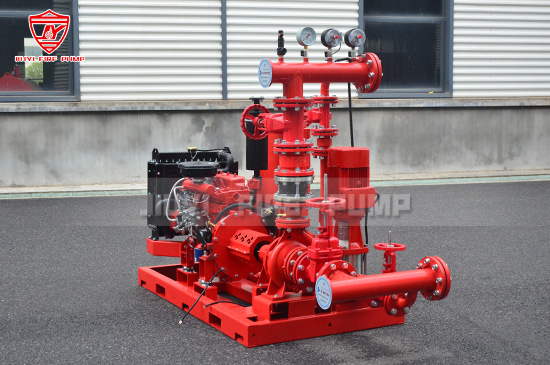
Maintenance Recommendations to Prevent Baseplate Corrosion
Even the best-installed systems require maintenance. Here’s what to include in a routine corrosion prevention program:
-
Monthly inspections: Check the baseplate and surrounding area for signs of rust, leaks, or pooling water.
-
Annual repainting or touch-up: Reapply corrosion-resistant paint if you see scratches or wear.
-
Cleaning: Wipe down the baseplate and floor regularly to remove moisture, debris, or chemical residues.
-
Alignment checks: If corrosion is suspected, verify that the pump and driver alignment is still within specifications.
-
Humidity monitoring: Use a hygrometer to ensure that pump room humidity remains within safe levels (generally below 60%).
Consequences of Ignoring Baseplate Corrosion
Neglecting baseplate corrosion doesn’t just cause visual degradation—it leads to serious mechanical, financial, and safety consequences. Here are some real-world examples:
-
Pump misalignment due to uneven baseplate deterioration, causing coupling failure and seal damage.
-
Foundation instability as corroded anchors loosen or break under vibration.
-
Non-compliance issues during insurance or fire marshal inspections.
-
Safety risks for technicians working near unstable or degraded equipment.
-
Unexpected shutdowns during critical fire events, putting lives and property at risk.
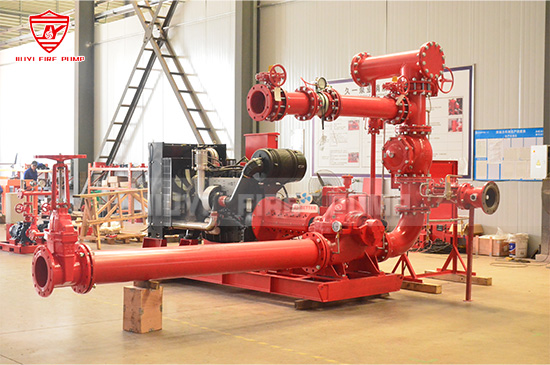
Final Thoughts
When designing or installing a fire pump system, the baseplate might seem like a minor component—but it holds the system together, quite literally. Corrosion at this foundational level can undermine even the most advanced fire protection setup.
By investing in corrosion prevention at the baseplate—through material selection, coatings, sealing, and proactive maintenance—you ensure long-term system integrity, reduce lifecycle costs, and keep your system inspection-ready and code-compliant.
As a fire pump manufacturer, we strongly advocate for baseplate-level corrosion protection as a critical part of any reliable fire safety solution. If you need help specifying or sourcing corrosion-resistant fire pump units, our engineering team is ready to assist.

